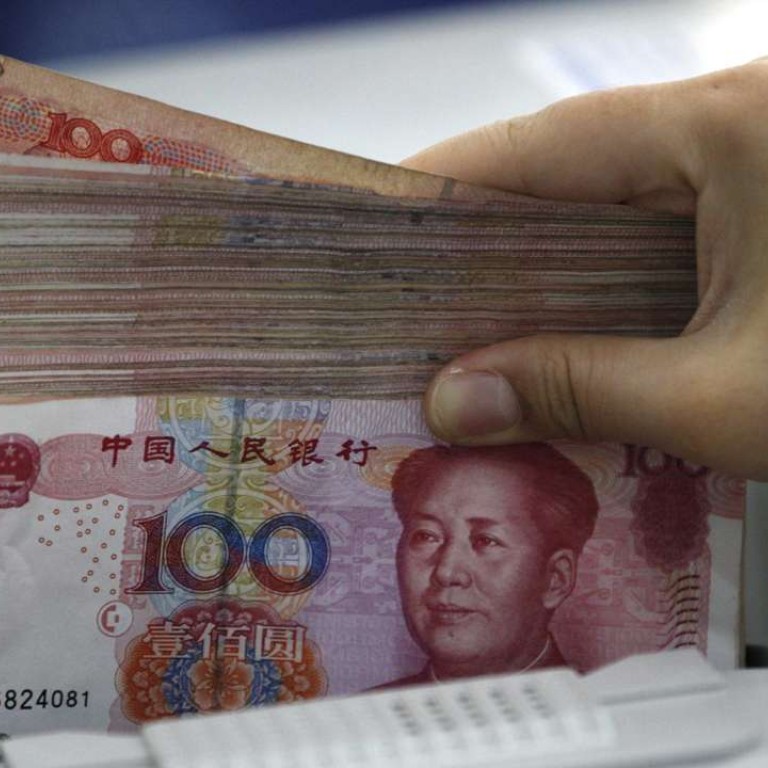
China’s real reason for getting yuan into IMF’s (otherwise pointless) currency basket
Put out the flags, sound a fanfare, and give three rousing cheers. In a move which mainland media have compared in importance to China’s 2001 accession to the World Trade Organisation, from this month the yuan is to become a component of the Special Drawing Right (SDR).
If you’d never heard of the SDR before Chinese officials started making such a big song and dance about it, it was for a good reason: the SDR is altogether irrelevant. Devised almost 50 years ago as a unit of account for the International Monetary Fund (IMF), the SDR is a notional basket of major currencies including the US dollar, the euro, the yen and the British pound. Unsurprisingly, given its inconvenience, the idea never caught on, and the SDR lapsed into well-deserved obscurity, universally ignored outside the rarefied economic atmosphere of the IMF’s offices.
Ignored, that is, until six or seven years ago when People’s Bank of China governor Zhou Xiaochuan started lobbying intensively for the inclusion of the yuan in the SDR basket. At the time, his enthusiasm for the long-forgotten unit bemused many observers, especially because Zhou is a smart chap who well understands the SDR’s unimportance. But Zhou was playing a bigger game. He was promoting the yuan’s SDR inclusion not because he believed it to be desirable in its own right, but because he saw it could be used as the means to a vital domestic policy end.

Zhou’s genius was to persuade his nationalistically-inclined but otherwise conservative compatriots in the Communist Party that membership of the SDR basket would confer enormous international prestige on China. Inclusion would endorse the yuan as a top-rank international currency on a par with the US dollar, confirming China’s status on the world stage as an economic and financial superpower.
Zhou’s party colleagues lapped it up, so much so that they were prepared to sign off on the IMF’s conditions for SDR membership. These include the requirement that SDR member currencies must be “freely usable”. But although use of the yuan to settle China’s foreign trade has been growing in recent years, strict capital controls limited dealing of the currency on foreign exchange markets. When China made its first bid for SDR inclusion in 2010 the yuan’s share of global currency trading was tiny – just 0.3 per cent according to the Bank for International Settlements, no more than the Malaysian ringgit.
To gain entrance to the SDR club, clearly China would have to relax its controls and allow freer cross-border flows of capital.
But the impossible trinity of international economics dictates that no country can allow free capital flows while simultaneously operating an independent monetary policy and maintaining a fixed exchange rate. You can have two of the three, but not all three together.
To become an SDR member, not only would China have to open its capital account, it would have to stop managing the yuan’s exchange rate so rigidly against the US dollar, and allow its currency to move more freely in international markets.

What’s more, to preserve the stability of the domestic financial system in an environment of freer capital flows and greater exchange rate volatility, China would have to complete the overhaul of its domestic monetary system, moving away from a model which dished out capital according to centrally dictated quotas, and towards one which allocates capital according to market forces.
This was the real point of Zhou’s whole exercise. A fixed exchange rate and fixed credit quotas may have worked well enough during the early export- and investment-led stages of China’s growth, when the country was simply catching up with more advanced economies. But to navigate the next phase of consumption and innovation-driven development, China would need a more sophisticated model. The currency could no longer be managed to achieve export competitiveness at the expense of consumers’ purchasing power, and interest rates would have to be liberalised so that capital could be allocated more efficiently than under the old state-directed system.
Of course, such radical reforms would face stiff opposition from entrenched interests: the export lobby which profited from a managed exchange rate, and the state companies which benefited from cheap loans. So Zhou sold his reforms by talking up the supposed glory of SDR membership.
In short, the SDR was a ruse to push through much-needed domestic liberalisation in the teeth of fierce opposition. In large measure the ruse succeeded, but that doesn’t mean the SDR is important, or even relevant. Hopefully, now we can now forget all about it once again.
Tom Holland is a former SCMP staffer who has been writing about Asian affairs for more than 20 years

